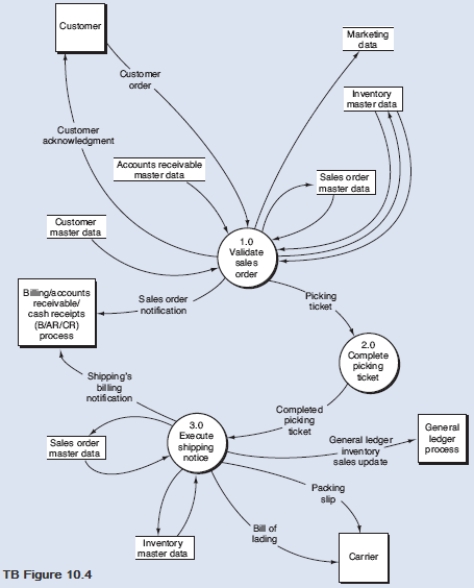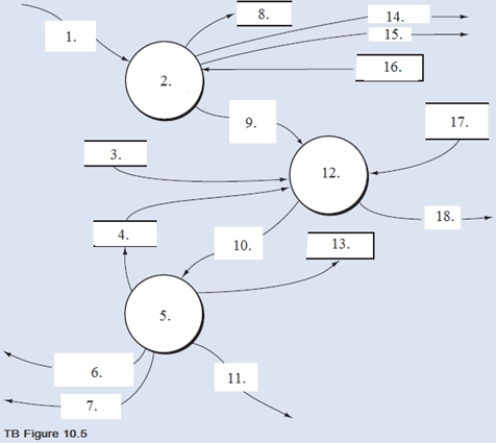Below is a narrative of the "Validate sales order" portion of the order entry/sales process.
Narrative Description
How does the OE/S process then validate a customer order? First,process 1.1 verifies the availability of the requested inventory by consulting the inventory master data.If a sufficient level of inventory is on hand to satisfy the request,the order is forwarded for further processing,as depicted by the data flow "Inventory available order." Conversely,if a customer orders goods that are not in stock,process 1.1 runs a special back order routine.This routine determines the inventory requirement necessary to satisfy the order and then sends the back order request to the purchasing department.This activity is depicted by the "Back order" data flow,which in reality is a specific type of exception routine (i.e. ,a specific type of reject stub).If the customer refuses to accept a back order,then the sales event is terminated and the order is rejected,as shown by the "Reject" data flow.Information from the order (e.g. ,sales region,customer demographics,and order characteristics that reflect buying habits)that has potential value to marketing is recorded in the marketing data store.
After assuring inventory availability,process 1.2 establishes the customer's existence and then evaluates credit.The credit check adds the amount of the order to accounts receivable balances and open sales orders (i.e. ,orders about to be receivables),and compare that total to the credit limit.If the customer has exceeded their credit limit,the order is rejected.
Upon a successful credit approval,process 1.3 performs the following activities simultaneously:

Required:
From the DFD in TB Figure 10.4 and the narrative description above,explode bubble 1.0 into a lower-level diagram showing the details of that process by identifying the words that belong in items 1 to 18 (TB Figure 10.5). 

Definitions:
Formal Statement
A formal statement typically refers to an official, explicitly articulated declaration of facts, intentions, or principles.
Empirical Measure
A method or metric that is based on observation or experience rather than theory or pure logic.
Causal Statement
A declaration that indicates a cause-and-effect relationship between two events or variables.
Positive Economics
A branch of economics that focuses on describing and explaining the economic world as it is, not as it should be.
Q43: The purpose of _ control goals is
Q53: Monitoring is a process that assesses the
Q59: A specific type of reject stub is
Q60: The stub attached to the customer statement
Q91: In the OE/S process,the one input that
Q95: We _ by reconciling totals prepared before
Q100: RFID tags are computer chips with an
Q101: Data about vendor compliance with the terms
Q118: A(n)_ file is one that is reviewed
Q138: A computer abuse technique called _ involves